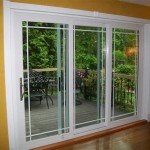Extra Large Pavers: Creating Stunning Outdoor Patios
Outdoor patios serve as extensions of living spaces, offering opportunities for relaxation, entertainment, and connection with nature. When designing or renovating a patio, material selection plays a crucial role in determining its aesthetic appeal, functionality, and longevity. Extra large pavers have emerged as a popular choice for creating visually striking and durable outdoor patios, offering a range of benefits compared to smaller paving options.
The term "extra large pavers" generally refers to paving stones exceeding the standard dimensions commonly found in residential hardscaping. While exact dimensions can vary, pavers considered "extra large" often measure 24 inches or more on at least one side. These pavers are available in various shapes, including squares, rectangles, and less conventional geometric forms, providing flexibility in design and installation.
The material composition of extra large pavers is diverse, encompassing natural stone options such as granite, travertine, and limestone, as well as manufactured concrete pavers. Each material offers distinct characteristics in terms of appearance, durability, and cost. Natural stone pavers provide a unique, organic aesthetic with variations in color and texture, while concrete pavers offer greater consistency in appearance and often come with enhanced durability features.
Key Benefits of Using Extra Large Pavers
The increasing popularity of extra large pavers for outdoor patios can be attributed to several key advantages they offer over traditional smaller pavers. These benefits relate to aesthetics, installation efficiency, and long-term performance.
Enhanced Aesthetic Appeal: Extra large pavers create a visually expansive and modern aesthetic. The larger surface area of each paver reduces the number of visible joints, resulting in a cleaner, more seamless appearance. This minimalist design can complement a wide range of architectural styles, from contemporary to transitional. The reduced joint lines also emphasize the color and texture of the paving material itself, allowing the natural beauty of stone or the sophisticated finish of concrete to take center stage.
The scale of extra large pavers contributes to a sense of grandeur and sophistication. They can transform a small patio into a visually larger space, making it feel more open and inviting. Furthermore, the variety of available colors, textures, and patterns allows for customization to match the homeowner's personal preferences and the overall design scheme of the property. For example, large format pavers in neutral tones can create a serene and understated patio, while pavers with bold colors or intricate patterns can add visual interest and personality.
Faster and More Efficient Installation: While the larger size of individual pavers might suggest otherwise, installing extra large pavers can often be more efficient than installing smaller pavers. The reduced number of pavers required to cover a given area translates to fewer cuts, less jointing work, and overall faster completion times. This can result in lower labor costs and a quicker turnaround time for the patio project.
However, it is important to note that the weight of extra large pavers can present challenges during installation. Proper equipment, such as mechanical lifting devices, may be necessary to handle the pavers safely and efficiently. Additionally, a well-prepared sub-base is crucial to ensure the stability and longevity of the patio surface. An uneven or poorly compacted sub-base can lead to shifting and settling of the pavers, resulting in an uneven and aesthetically unpleasing surface.
Increased Durability and Stability: When properly installed on a prepared sub-base, extra large pavers can offer enhanced durability and stability compared to smaller pavers. The larger surface area of each paver distributes weight more evenly, reducing the risk of individual pavers shifting or becoming dislodged over time. This is particularly important in areas with heavy foot traffic or exposure to harsh weather conditions.
The reduced number of joints also minimizes the potential for weed growth and water penetration. Weeds often thrive in the small spaces between pavers, requiring ongoing maintenance to keep the patio looking its best. Fewer joints mean fewer opportunities for weeds to take root. Similarly, water can seep into the joints between pavers, potentially leading to erosion of the sub-base and weakening the overall structure. By reducing the number of joints, extra large pavers help to protect the underlying layers of the patio from water damage.
Material Considerations for Extra Large Pavers
The selection of the right material for extra large pavers is critical to ensuring the patio's aesthetic appeal, durability, and suitability for the intended use. Natural stone and concrete are the two primary material options, each offering distinct advantages and disadvantages.
Natural Stone Pavers: Natural stone pavers, such as granite, travertine, limestone, and slate, offer a unique and timeless aesthetic. The natural variations in color, texture, and veining create a one-of-a-kind look that cannot be replicated by manufactured materials. Natural stone pavers are also highly durable and resistant to weathering, making them a long-lasting choice for outdoor patios.
Granite is known for its exceptional strength and durability, making it ideal for high-traffic areas. Travertine provides a warmer, more textured appearance with its distinctive pitted surface. Limestone offers a classic and elegant look with its subtle color variations. Slate provides a more rustic and textured appearance, often with a darker color palette. However, natural stone pavers can be more expensive than concrete pavers, and some types of stone may require sealing to protect them from staining and water damage.
Concrete Pavers: Concrete pavers provide a more consistent and predictable aesthetic than natural stone pavers. They are available in a wide range of colors, textures, and patterns, allowing for greater design flexibility. Concrete pavers can also be manufactured to mimic the appearance of natural stone, providing a cost-effective alternative for those who desire the look of natural stone without the higher price tag.
Furthermore, concrete pavers can be engineered to offer enhanced durability and resistance to weathering. Some concrete pavers are treated with sealants or coatings to protect them from staining, fading, and abrasion. They are also generally easier to install than natural stone pavers due to their consistent dimensions and uniform shape. However, concrete pavers may not have the same natural beauty and uniqueness as natural stone pavers, and they may be more susceptible to fading over time.
Installation Best Practices for Extra Large Pavers
Proper installation is essential to ensure the longevity and performance of an extra large paver patio. A well-prepared sub-base, accurate leveling, and appropriate jointing methods are crucial for preventing issues such as shifting, settling, and weed growth.
Sub-Base Preparation: The sub-base is the foundation of the patio and must be properly compacted and graded to provide a stable and level surface for the pavers. Typically, a layer of crushed stone or gravel is used as the sub-base, followed by a layer of sand or paver base. The depth of the sub-base will depend on the soil conditions and the anticipated load on the patio. In areas with poor drainage, a deeper sub-base may be necessary to ensure proper water runoff. Proper compaction of each layer of the sub-base is essential to prevent settling and shifting of the pavers.
Leveling and Alignment: Accurate leveling and alignment of the pavers are crucial for creating a visually appealing and functional patio surface. A slight slope should be incorporated into the design to allow for water runoff. A laser level or string lines can be used to ensure that the pavers are installed at the correct height and angle. Proper spacing between pavers is also important for creating consistent joint lines and allowing for expansion and contraction of the materials due to temperature changes. The use of paver spacers can help to maintain uniform joint widths.
Jointing Methods: The joints between pavers can be filled with sand, polymeric sand, or mortar. Sand is the most common and cost-effective option, but it can be prone to weed growth and erosion. Polymeric sand is a more durable option that contains additives to help bind the sand particles together, preventing weed growth and erosion. Mortar provides the most durable and long-lasting jointing solution, but it requires more skill and effort to install. The choice of jointing method will depend on the desired aesthetic, the level of maintenance required, and the budget for the project.
In conclusion, extra large pavers present a compelling option for homeowners seeking to create visually stunning and durable outdoor patios. By understanding the benefits, material considerations, and installation best practices associated with these pavers, property owners can make informed decisions and achieve exceptional results in their hardscaping projects. The emphasis on careful planning, material selection, and professional installation will contribute to a patio that enhances the beauty and functionality of the outdoor living space for years to come.

Extra Large Pavers Cement Slabs With 1 Inch Black Stones 4 Oblong Backyard Landscaping Pebble Patio

How To Design With Large Concrete Pavers Peacock

Poured Concrete Pavers Create A Stylish Patio The Home

Modern Hardscaping Design Ideas Techo Bloc

How To Design With Large Concrete Pavers Peacock

2024 Hardscaping Trend Alert Large Format Pavers Genest Concrete

Poured Concrete Pavers Create A Stylish Patio The Home

440 Sq Ft Large Rectangular Paver Patio Design With Seating Wall And Fire Pit

5 Modern Options For Concrete Pavers

Ibai Paver Large Concrete Slab Smartstone








